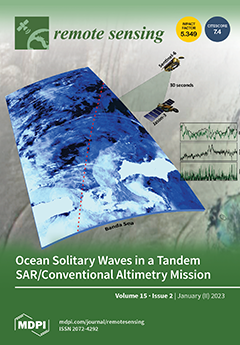Many regions worldwide suffer from heavy air pollution caused by particulate matter (PM
2.5) and nitrogen dioxide (NO
2), resulting in a huge annual disease burden and significant welfare costs. Following the outbreak of the COVID-19 global pandemic, enforced curfews and
[...] Read more.
Many regions worldwide suffer from heavy air pollution caused by particulate matter (PM
2.5) and nitrogen dioxide (NO
2), resulting in a huge annual disease burden and significant welfare costs. Following the outbreak of the COVID-19 global pandemic, enforced curfews and restrictions on human mobility (so-called periods of ‘lockdown’) have become important measures to control the spread of the virus. This study aims to investigate the improvement in air quality following COVID-19 lockdown measures and the projected benefits for environmental health. China was chosen as a case study. The work projects annual premature deaths and welfare costs by integrating PM
2.5 and NO
2 pollutant measurements derived from satellite imagery (MODIS instruments on Terra and Aqua, and TROPOMI on Sentinel-5P) with census data archived by the Organization for Economic Co-operation and Development (OECD). A 91-day timeframe centred on the initial lockdown date of 23 January 2020 was investigated. To perform the projections, OECD data on five variables from 1990 to 2019 (mean population exposure to ambient PM
2.5, premature deaths, welfare costs, gross domestic product and population) were used as training data to run the Autoregressive Integrated Moving Average (ARIMA) and multiple regression models. The analysis of the satellite imagery revealed that across the regions of Beijing, Hebei, Shandong, Henan, Xi’an, Shanghai and Hubei, the average concentrations of PM
2.5 decreased by 6.2, 30.7, 14.1, 20.7, 29.3, 5.5 and 17.3%, while the NO
2 decreased by 45.5, 54.7, 60.5, 58.7, 63.6, 50.5 and 66.5%, respectively, during the period of lockdown restrictions in 2020, as compared with the equivalent period in 2019. Such improvements in air quality were found to be beneficial, reducing in 2020 both the number of premature deaths by approximately 97,390 and welfare costs by over USD 74 billion.
Full article





